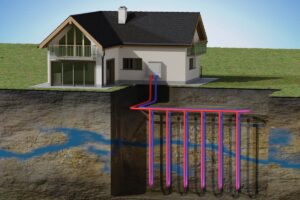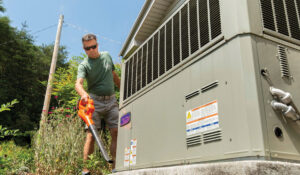 Seems like it happens every year. One day we are heating our homes, the next we are running the air conditioner. This year is no exception. Many electric bills mailed in June included kilowatts used to heat and cool during the month of May.
Seems like it happens every year. One day we are heating our homes, the next we are running the air conditioner. This year is no exception. Many electric bills mailed in June included kilowatts used to heat and cool during the month of May.
As I write this column, the TV weatherman is telling us that this week has been the second hottest week on record for this date in June. Looks like lots of iced tea, homemade ice cream and lemonade in the forecast.
We all want air conditioning and we really want it to be affordable. Although there isn’t much we can do about electric rates, we can keep our energy use affordable by using less or making our house more efficient. Yep, I know that some of you are thinking that you have heard this before, and you probably have, but have you done anything about it? Have you made your plan as I suggested last month? I am aware that some of you have, because you have told me so.
TV or radio interviewers often ask me, “What is the most important thing to do to make a house more energy efficient?” Well, I tell them that every house is different and the needs are different. However, years of experience have taught me that almost every house that has central heating and cooling also has leakage in the ductwork. So, I say the most important thing is for folks to put the ductwork back together if needed and seal every joint.
The average house has between 200 and 400 cubic feet per minute (cfm) leakage in the heating and cooling system when testing with blower door diagnostic equipment.
Well, a large plastic trash bag in the kitchen will hold about three cubic feet of air, so the leakage in the ductwork is the equivalent of about 100 bags of air per minute lost to the attic or crawlspace. I understand this is hard for you to believe. But for those of us who have tested many houses, we are not surprised at all.
Diagnostic tools such as the blower door, the duct blaster and the infrared camera have helped locate and measure the leakage. The average house has between 200 and 400 cubic feet per minute (cfm) leakage in the heating and cooling system.
So just how important is this? Well, 400 cfm is close to the amount of air that you would find in a one-ton air conditioning unit. So if your house has a four-ton air conditioning unit and 400 cfm leakage, then you are actually only getting three tons of cooling in your house. This would be 25 percent leakage, which is a serious problem.
Consider this: What if your hot water pipes had 25 percent leakage? I am certain you wouldn’t tolerate that! You do not need to even wonder if your ductwork has this kind of problem because most do. What you need to know is how to find these leaks and who to call to fix them.
Amazingly, most heating and cooling companies do not even inspect all of the ductwork, much less test the system. There are, however, some companies that can do so and at a reasonable fee. In most cases, your local electric cooperative can assist with a recommendation. Many of the electric cooperatives in Illinois have provided extensive training to some of their member services personnel. As a member of a cooperative, you should feel free to ask for assistance.
A few days ago, one of my good friends at Ozarks Electric Cooperative asked me if I had seen the cooperative’s newest diagnostic tool that reveals the duct leakage in a dramatic way. I asked, “What do you have now?” He told me that he had a small machine that would blow theatrical smoke through the ductwork. By seeing where the smoke escapes, you can determine the location of the duct leakage. He told me that he and others had tested several houses and all had excessive duct leakage.
If you can see where the leak is located, just about anyone can fix it with affordable duct mastic. This is a fairly simple energy efficiency fix, so I suggest that you make duct leakage a top priority of your energy efficiency improvement plan. It isn’t likely to get much cooler anytime soon.
See you next month.
P.S. If you want to see a short video about testing a house with these instruments, go to
www.ozarksecc.com. Click on the Energy Efficiency tab and then Energy Audits.
Doug Rye can be heard on several different Illinois radio stations. You can go to Doug Rye’s Web site at www.dougrye.com, e-mail him at






